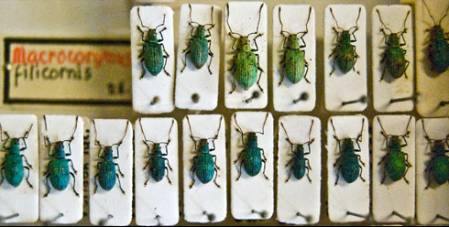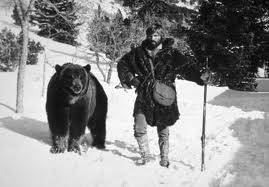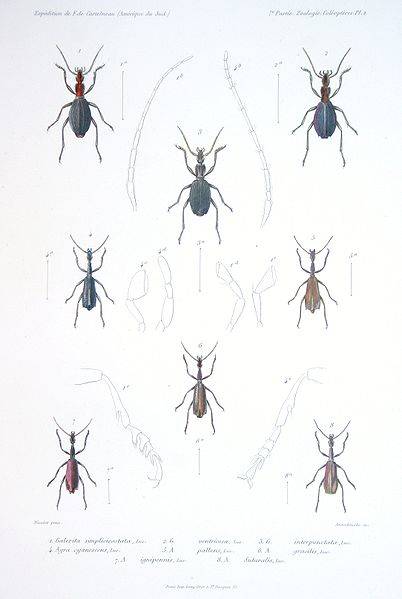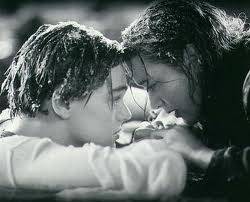A belated Happy New Year!
With the passing of 2010, we look back over what has been an eventful and at times poignant year for the beetling community. It would be impossible to include everything that happened in and around the Coleoptera department in 2010 in a mere blog, so apologies if anything significant has been missed, but here are a few shining examples to set the standard for the coming year:
This year saw two majorly significant collections come to the Natural History Museum, the Vorisek collection of Weevils (Curculionidae) (which is now housed in the Coleoptera department) and AA Allen’s collection of British beetles (which is awaiting deposit to the Museum). These two collections constitute a lifetime’s work of these great Coleopterists and the Museum, indeed the scientific community is indebted to their dedicated work of the previous century.
AA Allen
Mr Anthony Adrian Allen (1913-2010) was a leading authority on the British beetle fauna and published hundreds of papers and scientific notes, in a career going back to the 1930s. He formed a bridge between the contemporary community and some of the great names of the past, such as his close contacts Phillip Harwood and Horace Donisthorpe. (Max Barclay, The Coleopterist)
This year we intend to digitally scan the whole collection which includes most representatives of all the c.4000 British species, which will then be made available on the internet as a scientific resource, and as a permanent record of A.A. Allen’s immense contribution to the understanding of the British Coleoptera.
A.A. Allen’s portfolio of publications included the descriptions of four valid new species of British beetle:
Aleochara phycophila Allen, 1937 (Staphylinidae)
Acrotona benicki (Allen, 1940) (Staphylinidae)
Scraptia testacea Allen, 1940 (Scraptiidae)
Longitarsus fowleri Allen, 1967 (Chrysomelidae)
A tribute to AA Allen can be found in The Coleopterist, the journal for British Coleoptera http://www.coleopterist.org.uk/
Oldrich Vorišek
© Libby Livermore 2010
Oldrich Voríšek, an amateur Czech collector whose collecting efforts of over 40 years yielded a collection of 45,000 specimens and 4,500 species of weevil from Europe, came to the Museum in 2010. It still takes my breath away to think of it, let alone to even physically start working with the collection. Currently we have a few volunteers, namely Libby and Katie who are assisting in recurating the beetles, and incorporating them into the Museums’ collection. There are 750 Type specimens which through our curating efforts will eventually be made widely available to the scientific community, both physically and virtually!
For more information on the Vorišek collection follow this link.
http://www.nhm.ac.uk/about-us/news/2010/august/wonderful-weevil-collection-comes-to-museum79149.html
New species
And now to the lighter side of the news, new species are discovered and described every year by the academic Coleoptera community, and in this age of decreasing biodiversity (of named species), it is ever more important to know what we have got. My vote for new species of the year goes to Hydroscapha redfordi (10 of the type series are deposited here in the Natural history Museum).
For a full description here is the paper citation:
Crystal A. Maier (a), Michael A. Ivie (a), James B. Johnson (b) and David R. Maddison (c). 2010. A New Northern-Most Record for the Family Hydroscaphidae (Coleoptera: Myxophaga), with Description of a New Nearctic Species. The Coleopterists Bulletin
http://www.bioone.org/doi/full/10.1649/0010-065X-64.4.289
The authors’ decision to name the species after the great actor, director and environmental campaigner Robert Redford, for his continued efforts to support the conservation of the Rocky Mountains, is prompted by the film Jeremiah Johnson, with Redford playing the leading role. Hydroscapha redfordi is found in hot springs where it inhabits rock faces covered by mats of filamentous algae. The Type locality of this species is Jerry Johnson Hot Springs.
Here is Robert Redford with an animal at least beginning with ‘B’, if not an actual beetle!
Image Courtesy of IMDB
New species are often named in honour of significant people (known as patronyms), either in the scientific community, for example the Lucanid, (Scarabaeoidea) Erichius darwinii Paulsen 2010, another new species for 2010, or in the world of popular culture, such as Agra katewinsletae (Carabidae) Erwin, 2002. You might have guessed, after the actress Kate Winslet for her role in Titanic. In the original description Erwin cites his somewhat tenuous choice of name, Her character did not go down with the ship, but we will not be able to say the same for this elegant canopy species, if all the rain forest is converted to pastures. Well said!
Some specimens of the curious aboreal carabid, Agra.
And to end on a tragi-romantic note, here is Kate and Leo...you know what happens next...
Next week, fieldwork from 2010...






